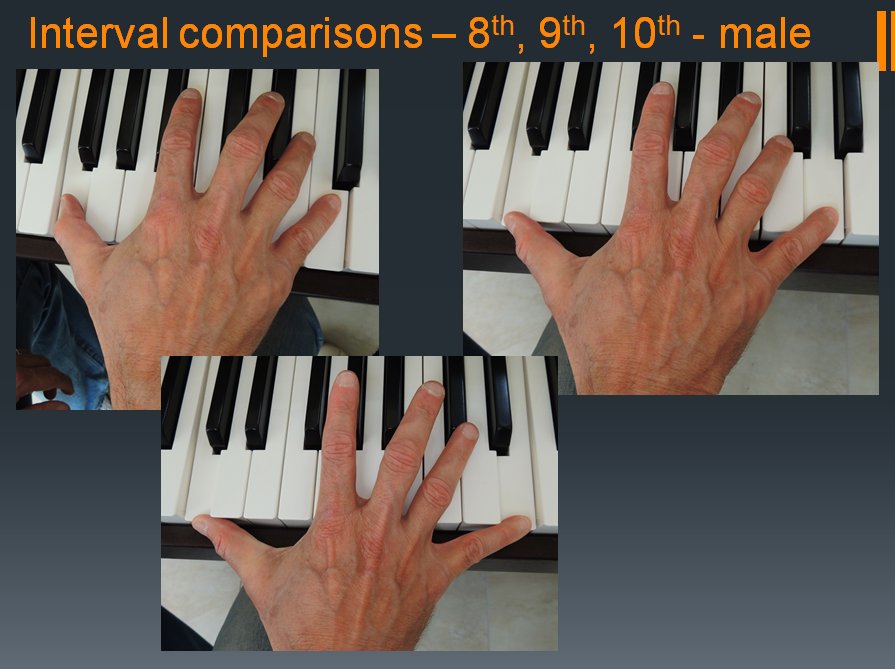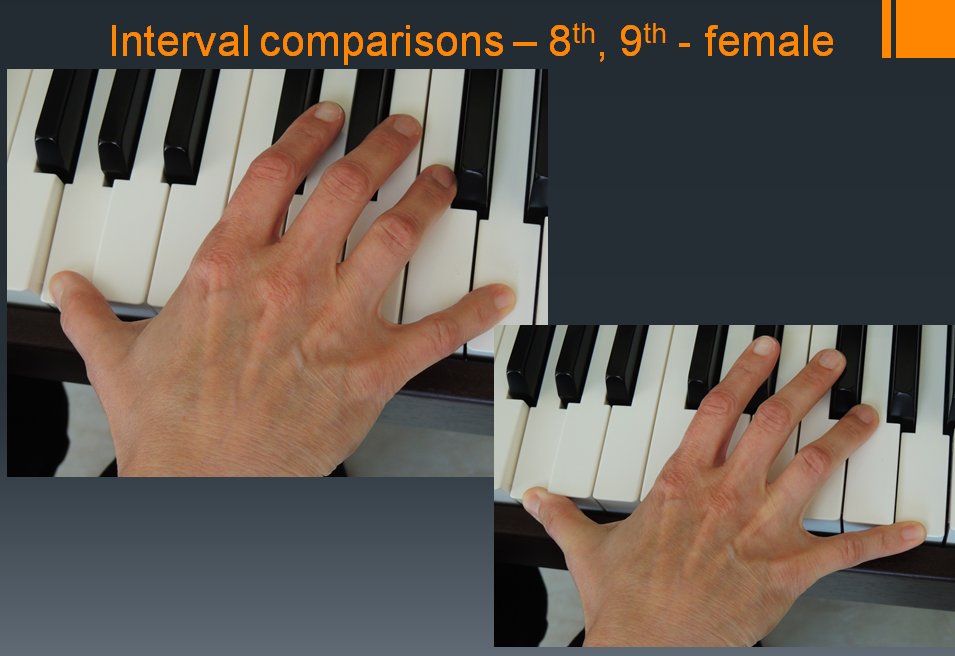Hand span and maximum interval reach
It is useful to relate hand span to maximum interval reach. In other words, this is a pianist’s the capacity to stretch a specified interval on the conventional keyboard. [While ability to reach certain intervals is only one of the many benefits of keyboards with narrower keys, it is a fundamental constraint on the ability to perform certain repertoire.]
To calibrate 1-5 active hand span against ability to play different intervals, we (Boyle & Boyle, 2009) measured the hand spans of around 25 adult pianists and documented the largest white key interval they were able to play, We recorded both a minimal level of comfort (ability to ‘just’ slide thumb and fifth finger away from the edge in towards the black keys), and just reaching (‘on the edge’ of the white keys), involving extreme discomfort. The results of this calibration, plus more recent work relating to octave playing (see Defining a small hand) can be summarised as follows:
Approximate threshold – White key intervals
6.7 inches (17.0 cm) – Octave on the edge
7.6 inches (19.3 cm) – Octave with minimal comfort, 9th on the edge
8.5 inches (21.6 cm) – Octave with little or no tension in all situations, 9th with minimal comfort, 10th on the edge
9.4 inches (23.9 cm) – 9th with little or no tension in all situations, 10th with minimal comfort, 11th on the edge
A paper (Boyle, Boyle & Booker, 2015) presented at the Australasian Piano Pedagogy Conference includes estimates of the following minimum active 2-5 spans needed to play white key sixths reasonably comfortably, providing the ability to slide the fingers in away from the front edge of the keyboard without being obstructed by any black keys:
6.0 inches (15.2 cm) – Reasonably comfortable 6th
7.0 inches (17.8 cm) – Reasonably comfortable 7th
Relating these findings to the statistical summary measures shown on the Pianists’ hand spans – Australian study page, it appears that a significant minority (nearly 30%) of females cannot play an octave with even ‘minimal comfort’ on the conventional keyboard, and a large majority (over 80%) cannot play a ninth with ‘minimal comfort’, nor a tenth even ‘on the edge’. On the other hand, it seems that a significant majority of males can play an octave very comfortably, a ninth with at least minimal comfort (or better) and a tenth ‘on the edge’ (or better) using the conventional keyboard.


Below is an ‘average’ female hand showing their spans on three keyboard sizes.



